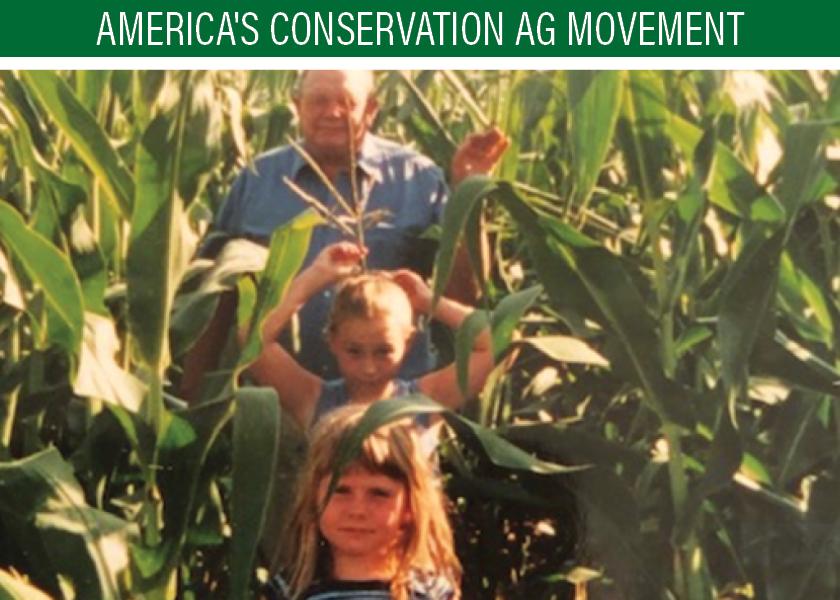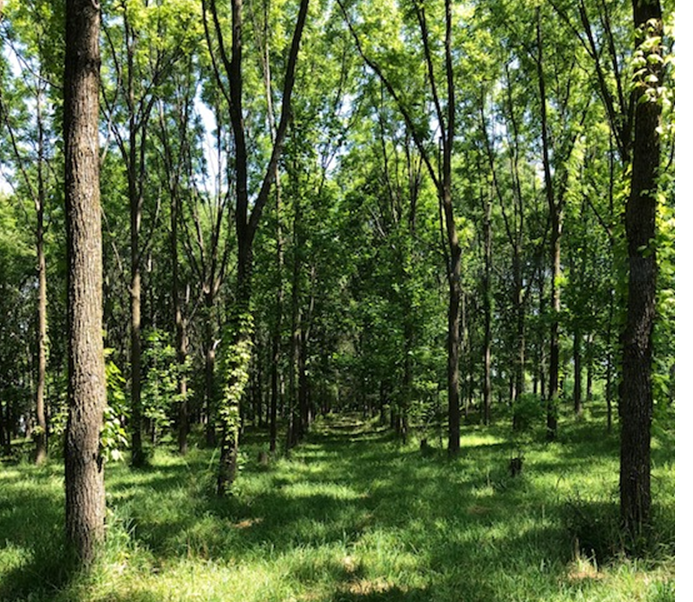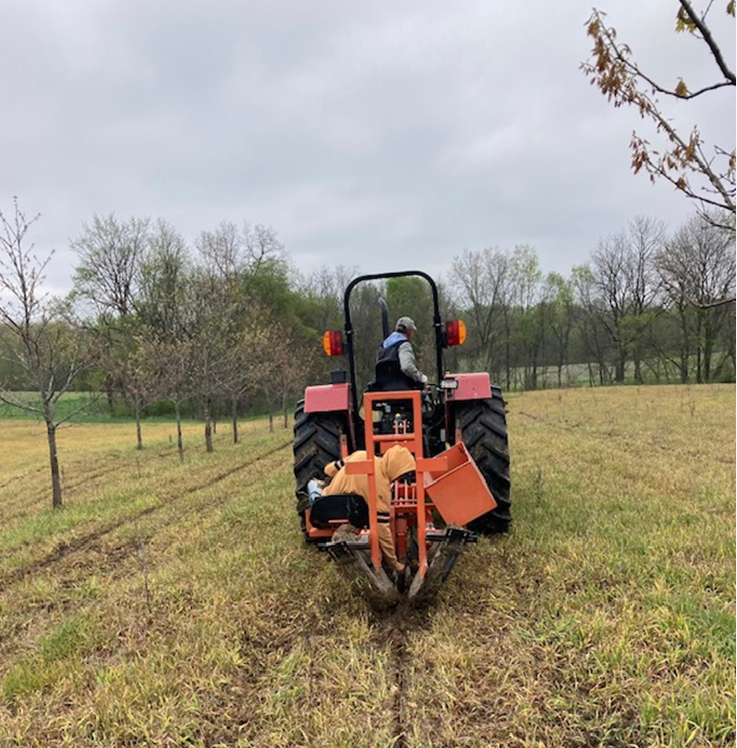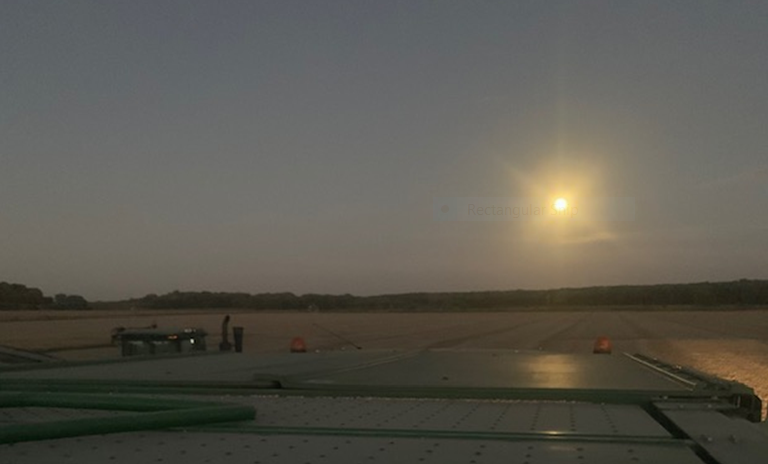Indiana Farm Thrives Thanks to ‘Three-Legged Stool’ Strategy

Partnerships, both formal and informal, have made it possible for the Billings family to continue the 1,800-acre Indiana farm that family patriarch, Dick, left them when he passed away three years ago. Today, his extended family – wife, Diane, son, Steve, and three granddaughters – are intent on maintaining and building upon his vision for the operation.
“My husband was a really good steward of this land; it was his parents’ farm. When they died, he was managing it all, even though he had a veterinary practice and we didn't live in the community,” says Diane regarding the farm, which is based near Covington, Ind.
Billings still lives an hour and a half away from the farm, but a combination of communication and coaching from a team of farmers and a forestry consultant gives her confidence to stay the course Dick set.
The team includes father-son partners, Jeff and Tyson Bell, J/T Bell Farms Inc., who have a crop-share 
“We’re using a whole-farm approach to what we’re doing,” Billings says. “We’re working synergistically across crops, trees and prairie, and regular communication has been key to what we’ve accomplished so far.” (Photo: The Billings family planted this grove of walnut trees 50 years ago. "It shows another conservation practice we have implemented which is to not mow around the trees to reestablish habitat," Diane says.)
Stronger Together
Billings likes to say the partners form the legs of a three-legged stool, the farm. Each leg is vital to its success.
The result is the team works collaboratively on farm projects, talking with each other via phone calls, texts and Zoom meetings weekly and sometimes on an even more frequent basis. The Bells weigh in on the crops, while Warner shares his perspective on the woodlands.
“All of our work overlaps, and we’re mindful and respectful of what’s going on for everybody,” Billings says.
Turning a profit on the farm is everyone’s goal, as is minding the conservation objectives Dick Billings had over the years, such as evaluating whether cover crops were viable. It’s why the team planted cover crop mixes in six different fields in 2020 and 2021, and plan additional plantings for 2022.
“Over time, we’re hoping to see soil improvement, and we’re interested in carbon sequestration, too,” Billings says.
Carbon sequestration is also a possibility for Billings’ hardwood acreage. “I think Diane and her family are positioning themselves to be ready for it when the opportunity is right,” Warner says, noting that a forest 
“We have good inventories on each stand, so we know what's growing where, and how fast it's growing,” Warner adds. “We're implementing practices, like invasive species management and what we call timber stand improvement to promote healthy and productive forests.” (Photo: Mike Warner and a helper plant trees in early 2022.)
Creating Solutions
As on any farm, problem solving is an important part of the team’s focus. To date, one of their biggest challenges has been developing and implementing a plan to minimize crop losses caused by the temperamental Wabash River which winds through 300 acres of Billings’ bottom ground. (Photo: A moonlight photo from the combine shows the farm's river bottom at harvest.)
The legendary river is nearly 500 miles long and spans the entire state, supplying drinking water to people and livestock in nearly 75% of the state. Known for its unpredictable nature, the Wabash River features no channel markings or even a single boat marina.
“The river dictates what you can do,” Jeff Bell says, adding that the river bottom ground is usually planted to soybeans. “We have a production plan every year, but it’s very seldom that we can stick to it without having to make changes.”
“When the river comes out, it’s a whole new ballgame,” Bell’s partner and son, Tyson, chimes in. “It’s like starting all over again, because it wipes out everything.”
Building A Buffer
When Diane stepped into the farm leadership role two years ago, her family, Warner and the Bells decided something had to be done to reduce crop losses and preserve topsoil.
“We all four walked down there in the river bottom with the district conservationist to look at it, the problem area on the farm, and Jeff and Tyson had already thought through where we could pull some ground out of production, based on yield maps, and put in a buffer,” Billings recalls.
The primary goal for the buffer: to keep the topsoil in place in those areas where the river would normally wash it out, Jeff says. When the soil stays in place allowing soybeans to flourish, yields typically average between 50 and 60 bushels per acre.
This spring, Warner seeded the buffer in a combination of warm season grasses and wildflowers – a combination he has seen work well for other landowners up and down the river.
“They work very well for filters and erosion control along field edges; plus, they make great wildlife habitat,” Warner says. “Deer will bed their young fawns down in the spring, the turkey will nest in that, and other game birds will utilize those edges as well. There's a lot of really good benefits associated with the buffers.”
The Bells are pleased with the results of the buffer to date and believe it will help them preserve crops and inputs. “Ultimately, our net income won’t change, even though we’re farming a few acres less,” Jeff says.
Where To From Here?
Earlier this summer, the farm irrigation system gave out. Billings and the Bells evaluated whether to replace it with a similar system or install one that is internet enabled. They chose the latter, though it was more costly upfront.
“The technology will allow Jeff and Tyson to monitor soil moisture levels and provide data to their mobile devices to indicate when the irrigation will start or turn off. The team is also installing sensors on the grain bins which will monitor humidity and temperature better and will let the Bells know when to activate the fans,” Billings says. “Ultimately, we think it will help us improve yields while conserving energy.”
Along with that, Billings believes such investments will help her family as well as the Bells in the future.
“Dick chose Jeff and Tyson to farm the property because he felt confident in their succession plan and their family legacy – just as he instilled the same hope for continuity in the three generations of our family,” Billings says.
“Jeff has a saying that consoles and comforts me all the time,” she adds. “He says, ‘We do the best we can, and we're going to leave this farm better than we found it.’ And that, to me is the guiding principle. It helps me whenever we need to make a decision and to know we should go ahead.”








